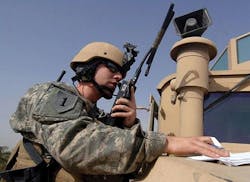Military electronics spending for communications and intelligence heading upward in 2017
The 2017 DOD budget CET&I request is up 5.1 percent from the $10.09 billion that Congress allocated for these accounts this year. The Pentagon released its 2017 DOD budget request last week.
The $10.74 billion request for communications, electronics, telecommunications, and intelligence equipment and research is the highest in at least three years. These accounts contained $15.1 billion as recently as fiscal 2012.
The DOD request for CET&I procurement and research does not include military activities with substantial electronics content, such as aircraft avionics, vetronics, and missile guidance. It also does not include DOD-wide agency spending for CET&I activities.
When all of these additional DOD electronics-heavy accounts are added, Pentagon spending levels for military electronics and defense electro-optics next year could approach $90 billion, industry analysts believe.
Related: Military research budget headed up for third straight year; largest seen in past five years
The DOD's CET&I budget request for fiscal 2017, which begins next October, includes $7.47 billion for procurement, which is up 3.6 percent from this year's congressional enacted level of $7.11 billion.
The proposed budget also requests $3.37 billion for CET&I research, development, test, and evaluation (RDT&E), which is up 13.3 percent from this year's enacted level of $2.97 billion.
Highlights of the Army's CET&I 2017 procurement budget request includes $437.17 million for the Warfighter Information Network-Tactical (WIN-T) Ground Forces Tactical Network; $43.81 million for the Defense Enterprise Wideband Satellite Communications Systems; $273.65 million for the Handheld Manpack Small Form Fit (HMS) digital radio; $131.36 million for communications security; and $192.04 million for the Distributed Common Ground System - Army (DCGS-A).
Related: Pentagon seeks military budget reductions in President Obama's last year in office
Highlights of the Navy's CET&I request include $248.77 million for fast attack submarine acoustic equipment; $274.89 million for AN/SLQ-32 shipboard electronic warfare (EW) equipment; $145.7 million for the Fixed Surveillance System deep-sea sonar system; $212.03 million for the Consolidated Afloat Networks and Enterprise Services (CANES) tactical shipboard network; $102.48 million for shipboard tactical communications; and $170.73 million fro shipboard information warfare.
The Air Force CET&I request includes $98.45 million for air traffic control and landing systems; $72.36 million for communications security equipment; $198.92 million for the Minimum Essential Emergency Communications Network (MEECN); and $117.94 million for tactical communications and electronics equipment.
The overall 2017 DOD budget request asks Congress for a total of $583 billion, whereas the 2016 total request was for $585.2 billion. It would reduce overall Pentagon spending by $2.2 billion over last year's request, and proposes a $10.3 billion cut from the 2016 request in discretionary spending for crucial accounts like procurement, research, operations, maintenance, military construction, salaries, and health care.

